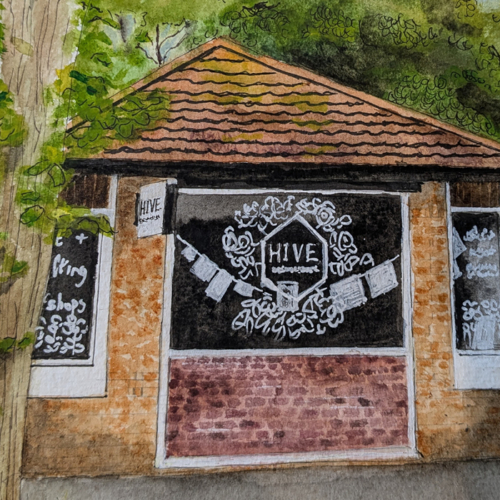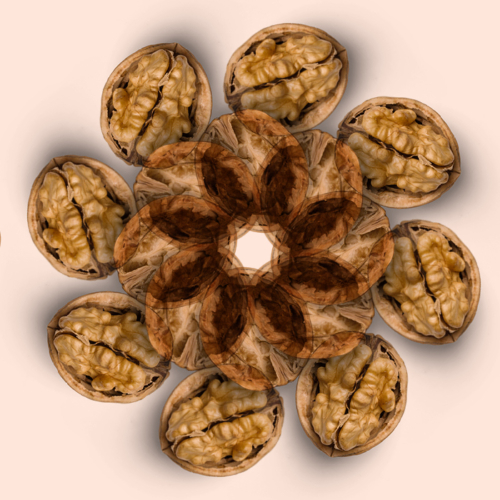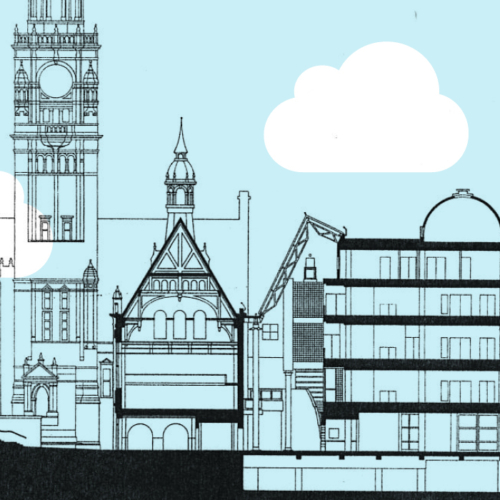We last spoke to John Grindrod as his book ‘How To Love Brutalism’ was published back in 2018. Of course a lot has happened globally since then, but the New Addington raised author and champion of post-war architecture has been busy writing a new book, which was released last week. Iconicon is an engrossing piece of social history which takes the reader on a fascinating journey around Britain’s buildings created since 1980: warts and all – with the final chapter 12 completely dedicated to Croydon. We caught up with John for a chat about writing a book during a pandemic, the future of our urban architecture, the perfect soundtrack for Croydon’s modernist landscape and more.
Croydonist: Do you think modernist architecture has been affected by Covid?
John: These last two terrible years have been unexpectedly fascinating for urban explorers. One of the strange side effects of the pandemic is that we have all become much more familiar with our local areas – all those lockdown walks! So all of the architecture that surrounds us has become far more present in our lives, regardless of whether it’s a modernist estate, a Victorian terrace, the local shops or the park. I’m sure we could all more accurately sketch our local areas from memory now than we could two years ago. Meanwhile those epic landscapes of office work, like the 80s shoulder pads of Docklands or the new glass towers of the City or the old sixties blocks of central Croydon, not to mention shopping centres like the Whitgift, have been neglected and become almost invisible to most of us. So now we’re beginning to rediscover those places too.
Croydonist: Was the research more tricky for Iconicon than your previous books?
John: One of the most fun bits of writing these books is getting to travel around the country and be incredibly nosy! I’d done a lot of the research for Iconicon before the pandemic, but I was still supposed to be doing more trips the week the first lockdown hit. I ended up interviewing a lot of folk via Zoom, and dropped a few chapters on places I couldn’t get to, but I’m hoping the finished book still shows enough of the crazy variety of modern Britain to make up for that.
Croydonist: Who was the most inspiring person you interviewed for the book?
John: I interviewed so many people, so that’s an impossible question! Mike Davies, who designed the Millennium Dome, was pretty mind-blowing, especially now that we’ve seen it shredded in Storm Eunice. Telling the inside story of how the Dome was built and the opening night was just amazing. Ronnie Hughes, who helped a community in Liverpool regenerate their own streets, where they ended up winning the Turner Prize for it, was an incredible and very moving story. Terry Farrell’s tales of designing the MI6 building were brilliant. But then so were the people who talked to me about living in Barratt homes or working in 80s business parks, the unexpected colourful stories just kept on coming.
Croydonist: Iconicon discusses modern buildings from the modest to the monumental: what’s your favourite modest building and monumental building included?
John: There’s a lot to choose from! Just sticking to London, I’m a big fan of BedZED, the zero energy estate in Beddington from the 1990s that was a pioneer in green design. And those beautiful new pieces of social housing designed by Peter Barber, with their wavy parapets and arches. On the big scale, I love the Gherkin, the Dome and MI6 for very different reasons, but I’m actually going to choose the Lloyd’s building by Richard Rogers, which if anything looks even more exciting and futuristic now than it did in the 1980s when it was built.
Croydonist: Of course, Croydon has its own chapter – what do you think is the future for Croydon and its architecture?
John: It was so interesting talking to young planners from Croydon about how they were trying to connect up the town centre on the ground in the 2010s with things like the new entrance to East Croydon Station, as meanwhile massive lumbering schemes that were approved by other people years before, like Saffron Square, would suddenly get built and they would all have to lump it. They called them ‘zombies’ – the undead from another era. I think Croydon’s main issues are its constant huge ambition and its inability to ever quite get anything properly finished, this time due to the council finances. I think for a while it’ll be a bit like the 1990s in Croydon, where very little actually got built, before another wave of development takes off in a few years time. The big worry is that investment in the basics – housing people well, providing services, etc – will all be the big victims in all of this cost cutting.
Croydonist: If you were forced to pick a favourite building in Croydon that’s been built this century which would it be?
John: So, I actually think some of the stuff built by Brick by Brick, some of the new infill houses in New Addington for example, are amazing and really beautifully designed. It’s just a shame the business model was such a disaster. It really should be possible to do something like that without crashing the borough’s economy. It will be interesting what people think of these buildings once the dust settles around all the scandals.
Croydonist: What would be your perfect soundtrack to walking around Croydon town centre’s modernist architecture?
John: I always think central Croydon is the perfect place to listen to a lot of late 70s and early 80s synth music, what my partner calls ‘portent of nothing’ because they sound really doomy but you’re never quite sure what they’re about – songs like Are ‘Friends’ Electric and Fade to Grey, or Warm Leatherette, or Underpass by John Foxx. There’s a kind of slightly mysterious, sad, industrial quality to a lot of it that’s perfect for a windswept walk between fading concrete monoliths and through underpasses where the tiling is crumbling off.
Croydonist: And finally do you have a passage you’d like to share with our readers from chapter 12?
John:
‘Croydon has changed, but not in ways I could have predicted. Back then, around the time of the millennium, the town existed in a kind of bubble of anonymity, its main image one of boredom from another era. That held true until the riots of 2011, a sudden outburst in a place gripped so long by inertia. It was a reminder of the inequalities of the borough, pockets of poverty surrounded by middle-class wealth and aspiration. Since then, the transformation has been rapid and sometimes shocking. Some of the town’s most recognisable towers – the sleek local authority offices Taberner House and the ribbed slab headquarters for Nestlé – have disappeared. The retail heart of the town, the Whitgift shopping centre, had long been under threat from a new scheme from Westfield and developer Hammerson. Plots of land by the station that had lain empty my whole life have been hastily filled with towering apartment blocks, as if thrown up in a flustered what open space? The weirdest thing for me hasn’t been the amount of rebuilding – Croydon has always loved a bit of that. It’s that Croydon became for a time – and it still seems absurd as I type it – hip.’
Thank you to John for chatting with the Croydonist.
‘Iconicon: A Journey Around the Landmark Buildings of Contemporary Britain’ by John Grindrod is published by Faber and is available in all good bookshops.
Some of John’s upcoming events are listed below. Check his website here for the full schedule.
Libraria, London: Wed 9 March
Bookseller Crow, Crystal Palace: Thu 10 March
Waterstones Piccadilly in assoc. with the Twentieth Century Society: Wed 23 March
Images courtesy of John and Faber. Portrait by Richard de Pesando
Posted by Julia






No Comments